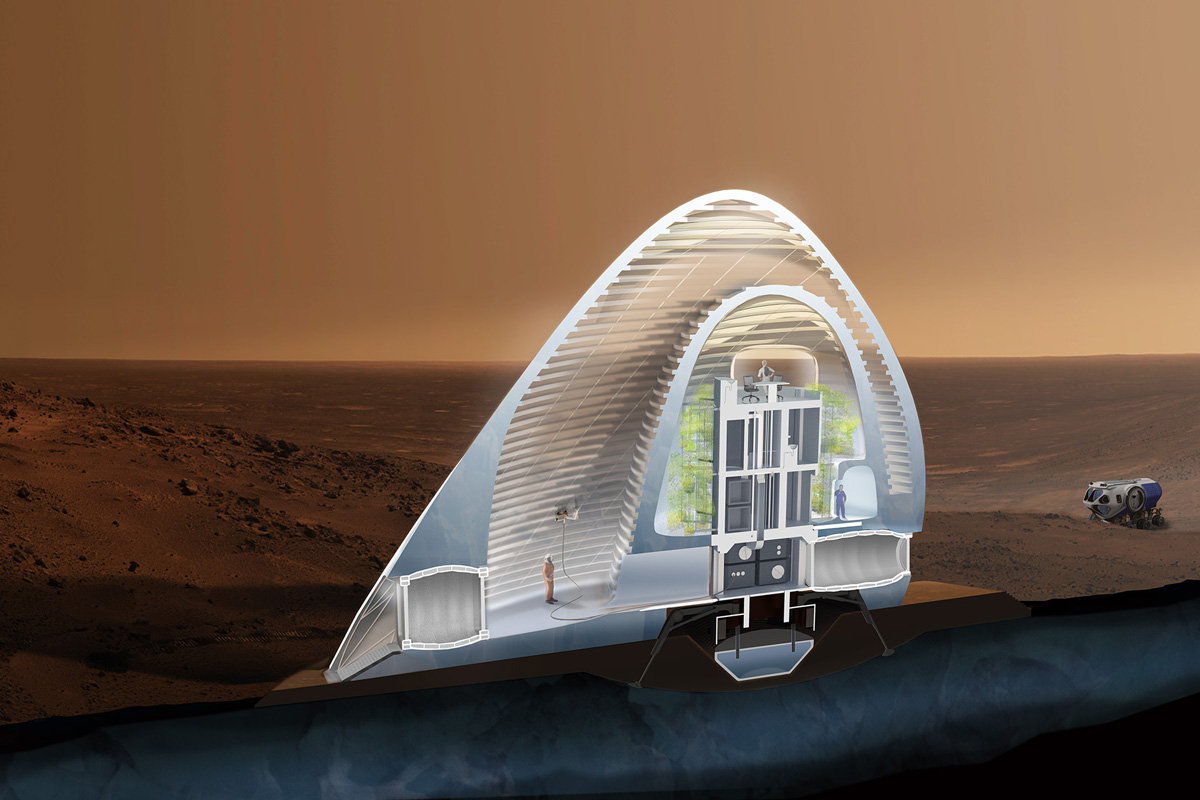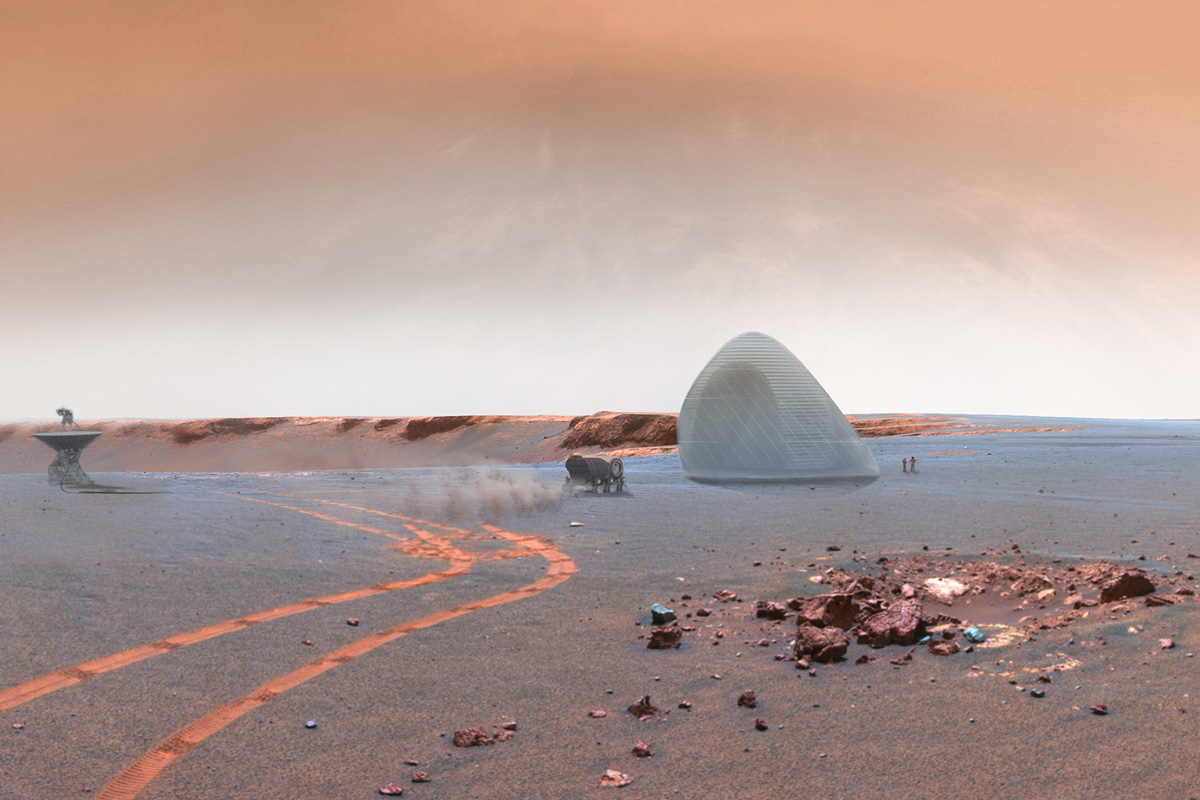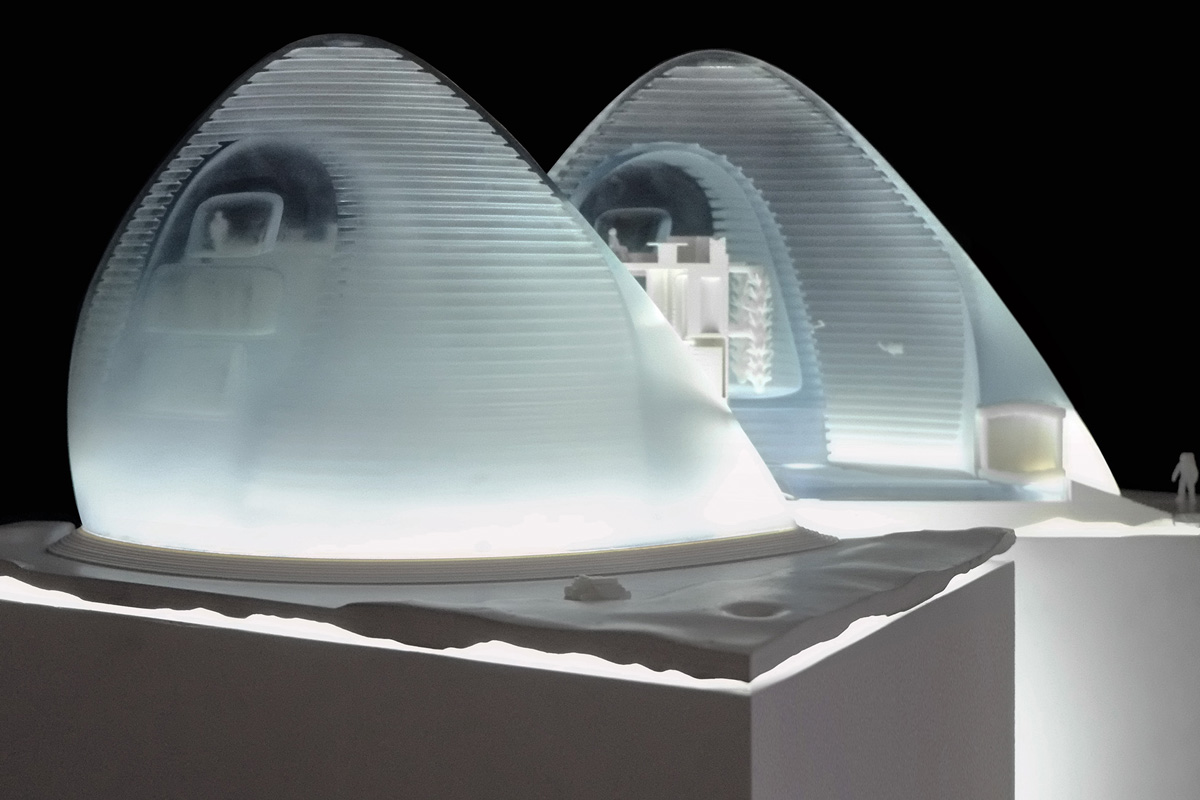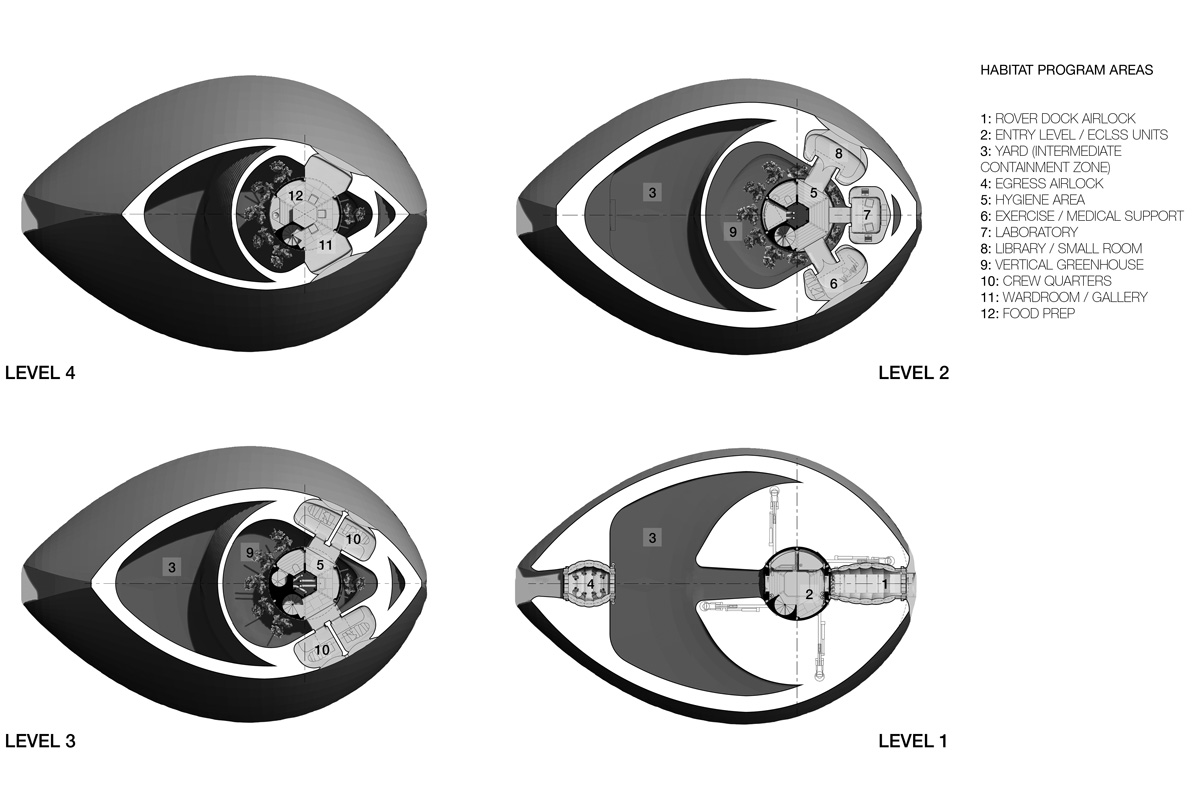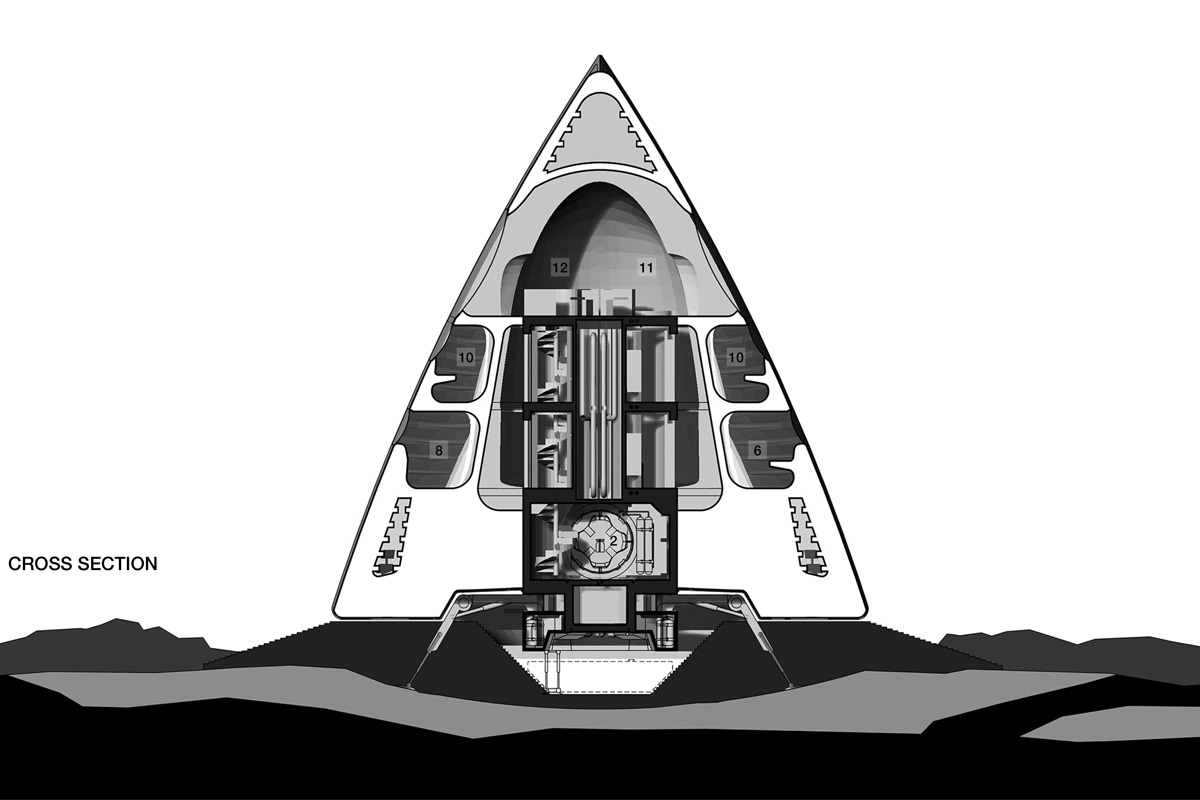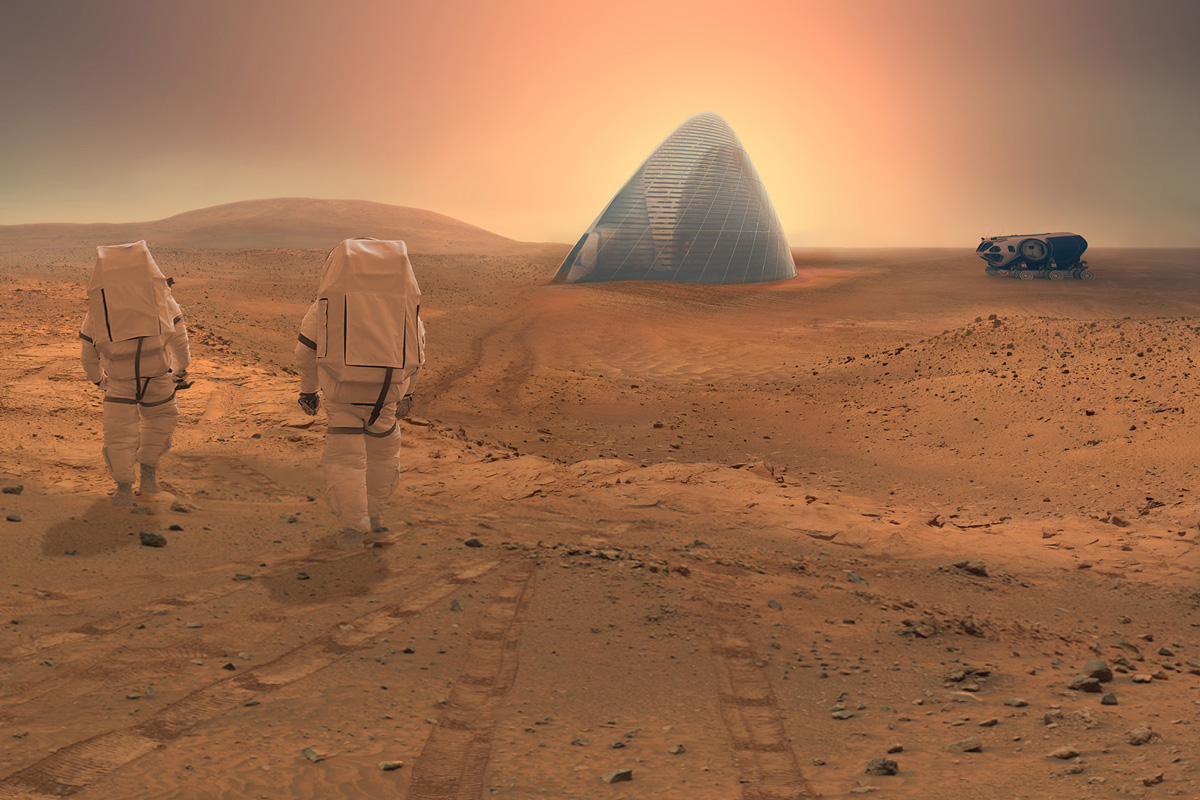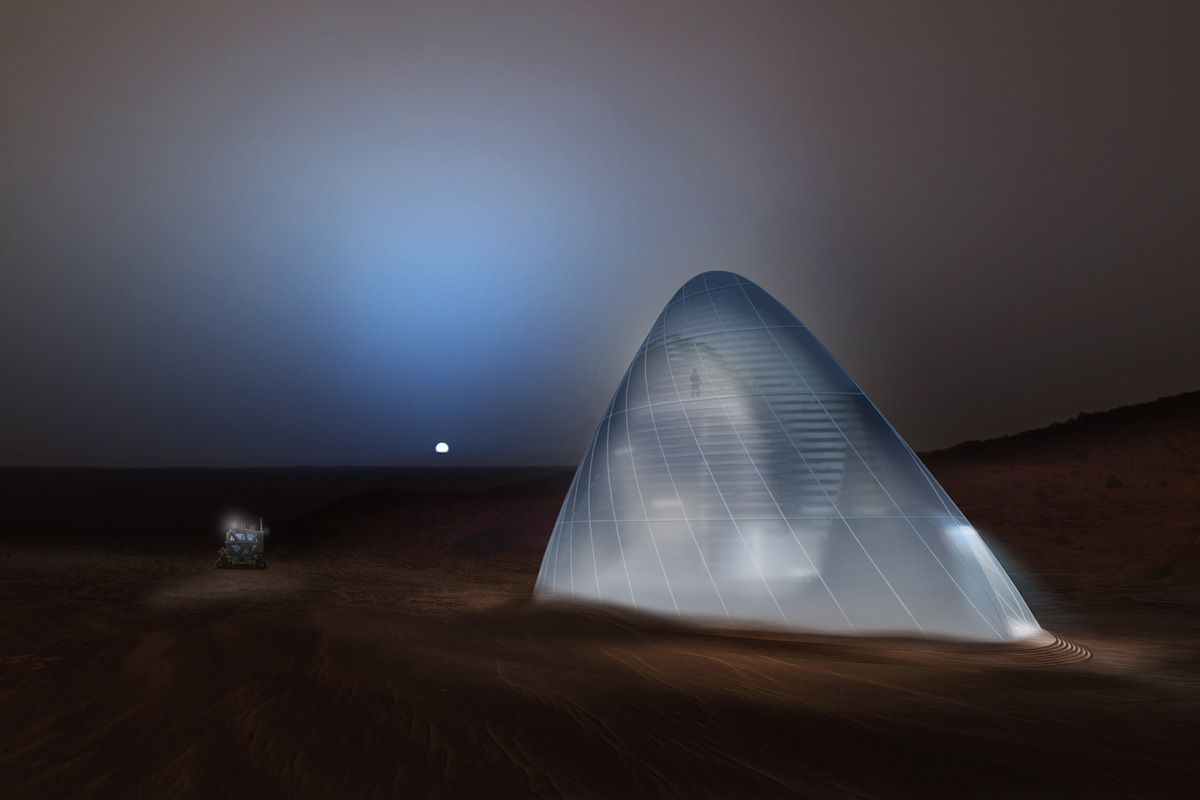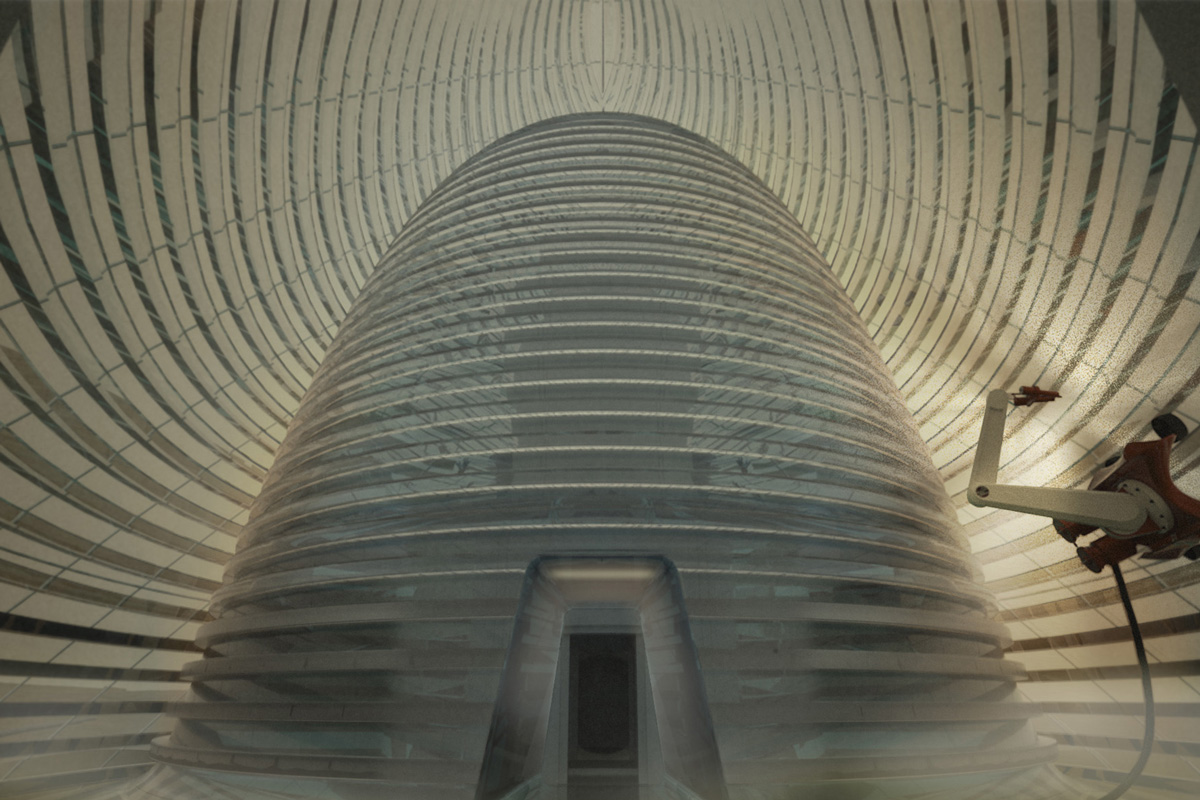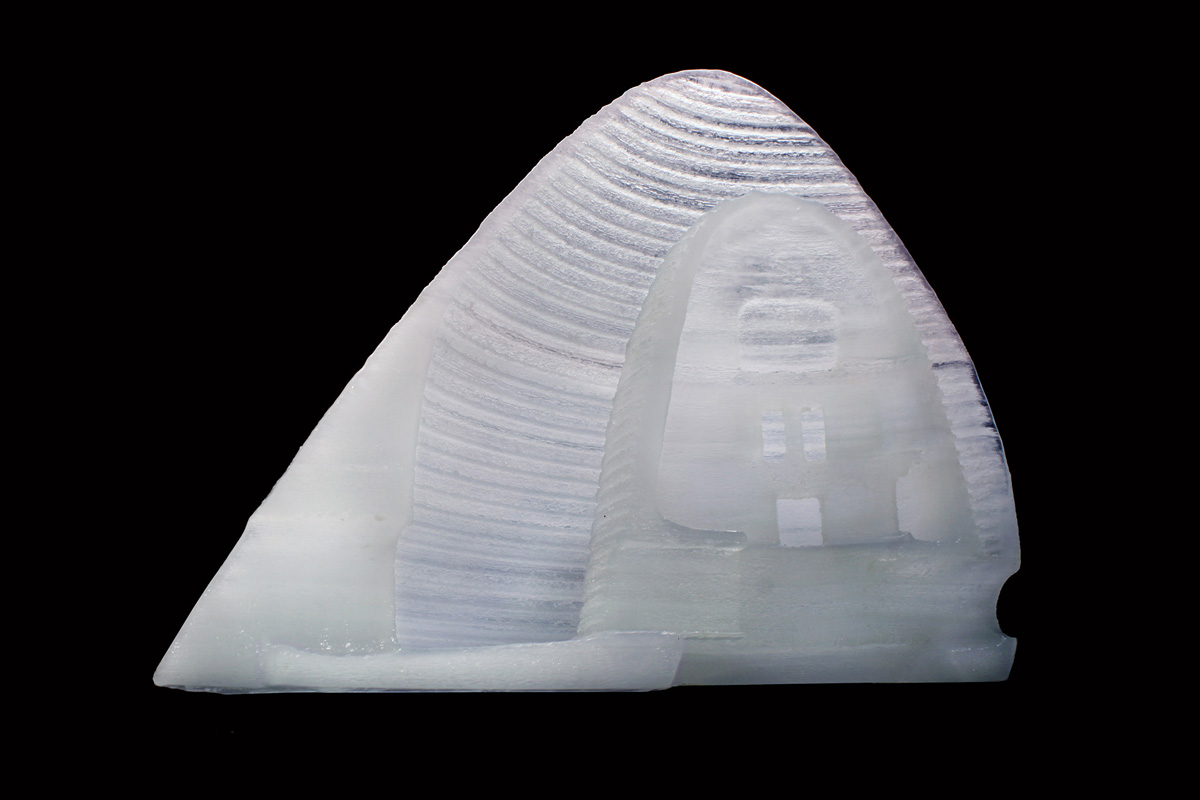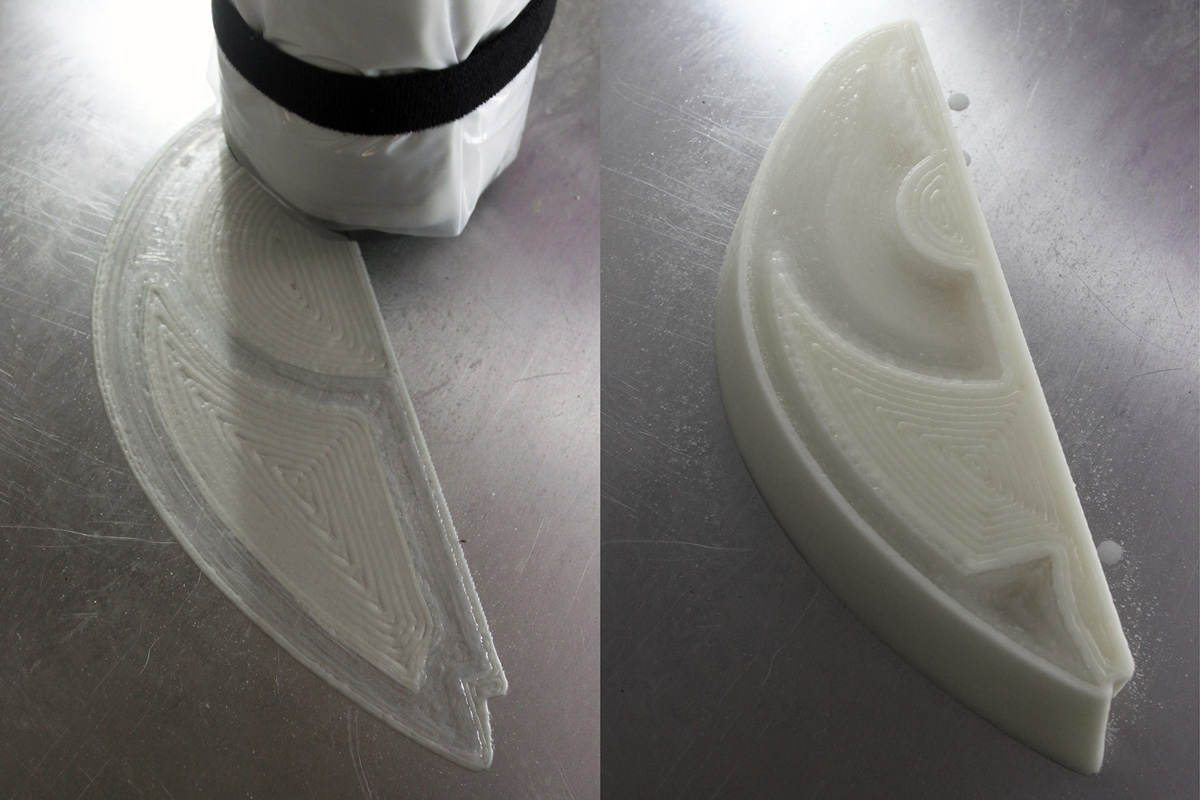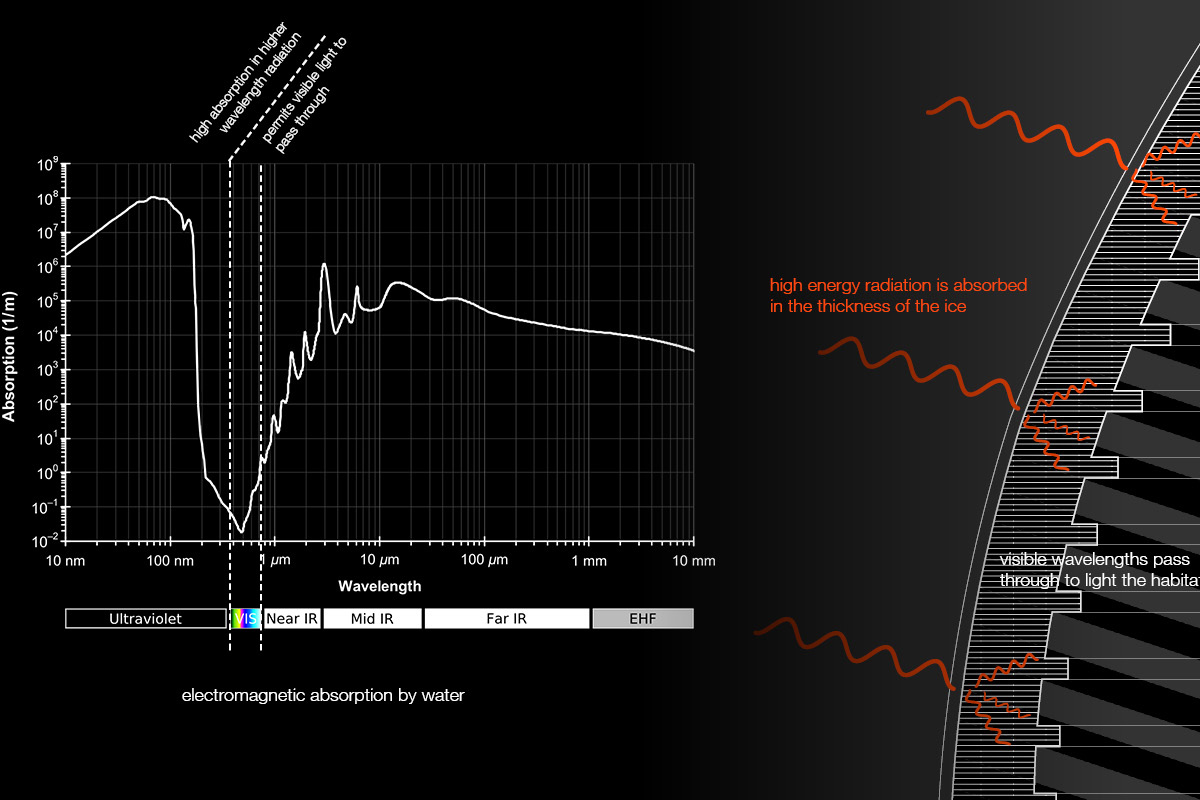Mars Ice House: Tour a Concept Martian Home in Pictures
The Mars Ice House
The Mars Ice House is the winning design from NASA's 2015 Centennial Challenge for a 3D-printed habitat for future human settlers on Mars. The architecture and space research collective SEArch+ and Clouds AO created this winning design which allows the humans living inside of it to feel connected to the outdoor environment on the surface of the Red Planet.
Driving to the Ice House
The tracks from a surface vehicle are still fresh in the red dust on Mars as the vehicle makes its way towards the Mars Ice House in the distance. Two astronauts can be seen in protective gear standing near the structure.
Translucent Ice House
This translucent visualization shows how the Mars Ice House lets light in and allows those inside of it to feel connected with the environment outside.
Inside the Mars Ice House
These illustrations show the layout of the Mars Ice House and its layers. The 3D-printed house features a laboratory, a library, a vertical greenhouse, and even a yard (also described as an intermediate containment zone).
An Icy Cross Section
A cross section of the Mars Ice House. This layered structure is designed to not only be a functional living space for future human colonists on the Red Planet, it will also serve to connect inhabitants with the outdoors on Mars.
A Martian Journey
This visualization shows two human colonists on Mars traversing the surface of the Red Planet by foot. The Mars Ice House can be seen in the distance along with a vehicle whose tracks are visible in the red dirt and dust.
Ice at Night
This image shows the Mars Ice House illuminated on the Martian surface at night. Water is the primary material used in the design of this unique structure.
Breaking space news, the latest updates on rocket launches, skywatching events and more!
Layers of Protection
The semi-translucent exterior of the Mars Ice House shields the inner "heart" of the structure in which all living quarters are located. This unique design and the use of water will shield humans from harmful radiation on the surface.
Unique Architecture
The Mars Ice Home features vertical gardens, living and working facilities, and unique, protective architecture. Water was chosen as a material not only because it could be integrated to help protect against radiation, but also because it has been predicted to exist in great quantities somewhere on Mars.
3D Printing Ice
3D printing with ice will present unique challenges to the Mars Ice House team. The team behind the design consulted scientific advisors, astrophysicists, geologists, structural engineers, and 3D printing experts to complete the design.
Protection Against Radiation
One of the greatest challenges that will face future astronauts on the surface of Mars will be radiation. There are severe health effects that could result from exposure to radiation. The team that designed the Mars Ice House thinks that the 3D printed, water-ice-based, layered structure will protect humans against radiation.

Space.com is the premier source of space exploration, innovation and astronomy news, chronicling (and celebrating) humanity's ongoing expansion across the final frontier. Originally founded in 1999, Space.com is, and always has been, the passion of writers and editors who are space fans and also trained journalists. Our current news team consists of Editor-in-Chief Tariq Malik; Editor Hanneke Weitering, Senior Space Writer Mike Wall; Senior Writer Meghan Bartels; Senior Writer Chelsea Gohd, Senior Writer Tereza Pultarova and Staff Writer Alexander Cox, focusing on e-commerce. Senior Producer Steve Spaleta oversees our space videos, with Diana Whitcroft as our Social Media Editor.
